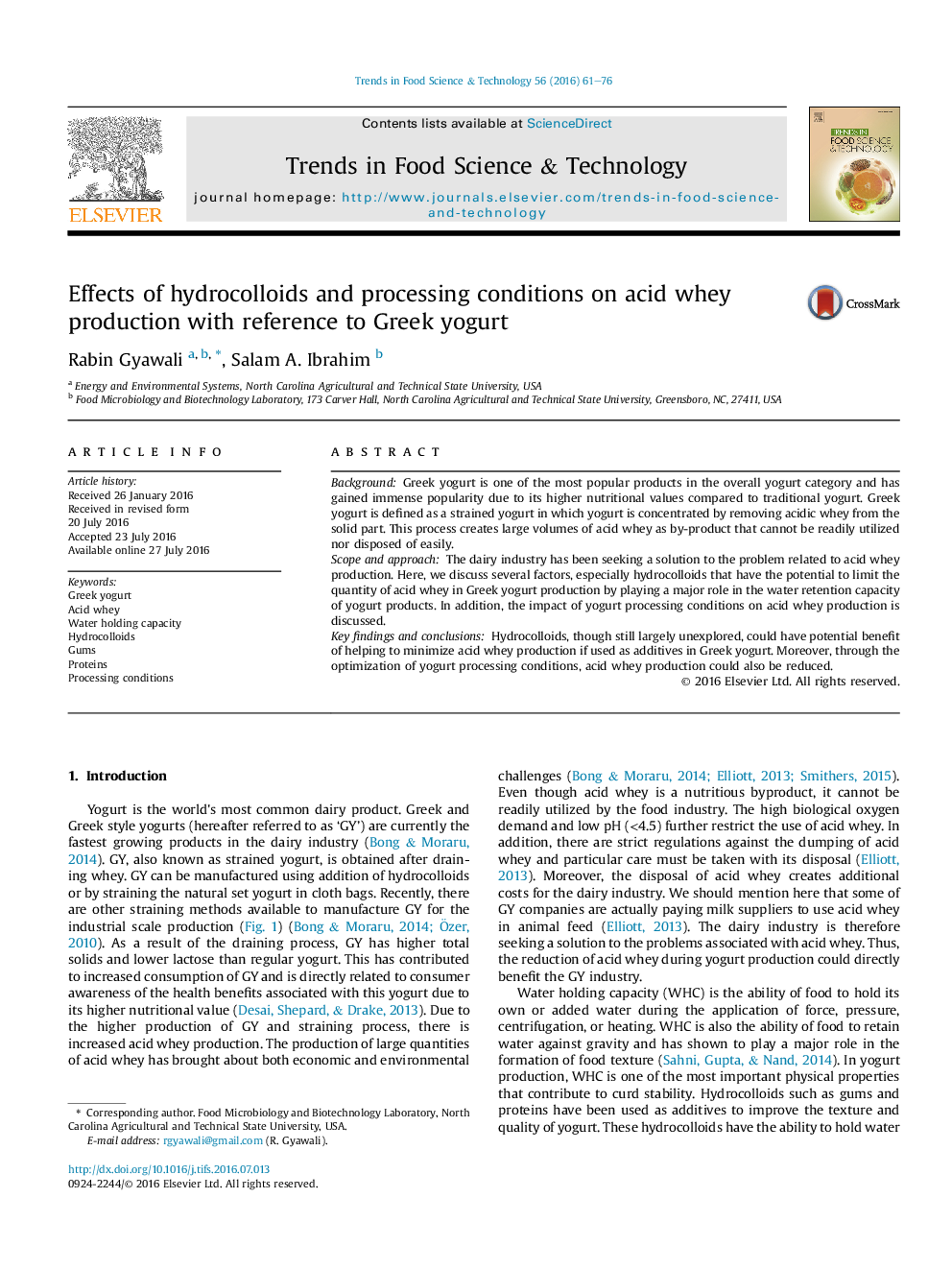| Article ID | Journal | Published Year | Pages | File Type |
|---|---|---|---|---|
| 2098421 | Trends in Food Science & Technology | 2016 | 16 Pages |
•Greek yogurt creates large volumes of acid whey.•Certain hydrocolloids have significant role in water holding capacity and have potential to reduce the quantity of acid whey.•Acid whey production also depends on yogurt processing methods.•The production of acid whey could be influenced by homogenization, incubation time and temperature, and culture type.
BackgroundGreek yogurt is one of the most popular products in the overall yogurt category and has gained immense popularity due to its higher nutritional values compared to traditional yogurt. Greek yogurt is defined as a strained yogurt in which yogurt is concentrated by removing acidic whey from the solid part. This process creates large volumes of acid whey as by-product that cannot be readily utilized nor disposed of easily.Scope and approachThe dairy industry has been seeking a solution to the problem related to acid whey production. Here, we discuss several factors, especially hydrocolloids that have the potential to limit the quantity of acid whey in Greek yogurt production by playing a major role in the water retention capacity of yogurt products. In addition, the impact of yogurt processing conditions on acid whey production is discussed.Key findings and conclusionsHydrocolloids, though still largely unexplored, could have potential benefit of helping to minimize acid whey production if used as additives in Greek yogurt. Moreover, through the optimization of yogurt processing conditions, acid whey production could also be reduced.
